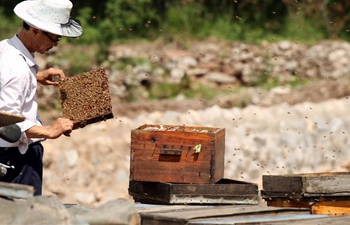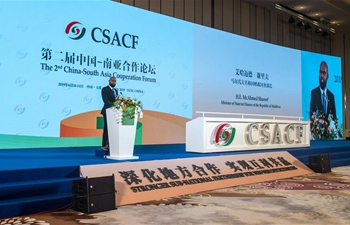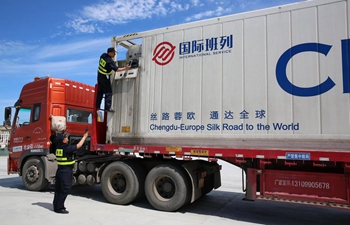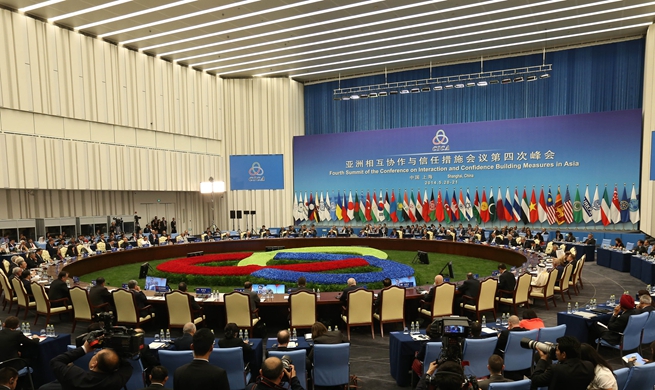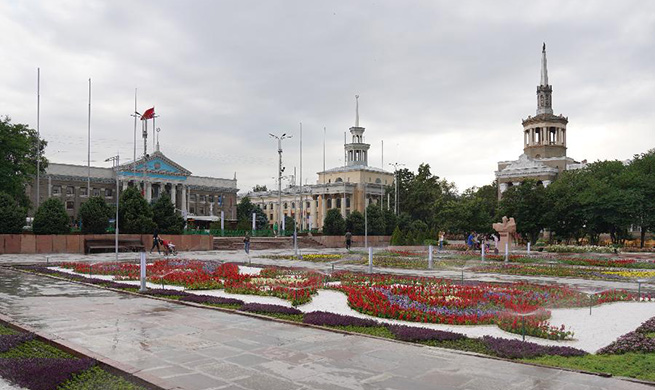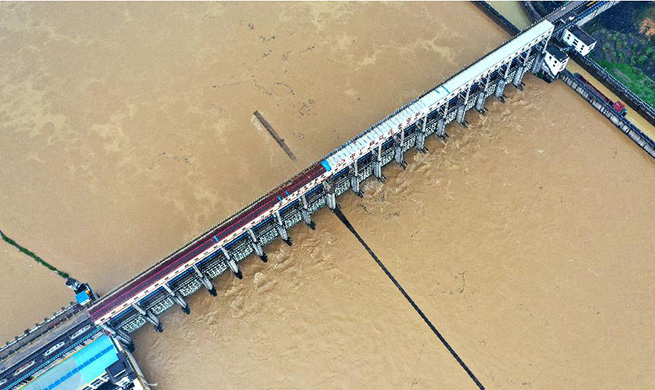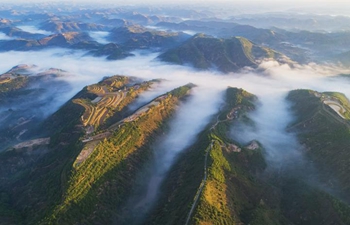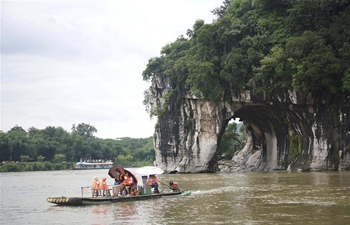VIENTIANE, June 11 (Xinhua) -- The value of mineral exports and domestic sales in Laos increased in the first quarter of this year despite lower commodity prices on the world market, local daily Vientiane Times reported on Tuesday.
In 2018, annual domestic mineral sales reached 66.2 million U.S. dollars, an increase of 38.79 percent, compared to a year earlier, while exports reached 1,439 million U.S dollars, an increase of 8.2 percent compared to 2017.
Meanwhile, domestic mineral sales increased 43 percent for the first quarter of 2019 compared to the same period last year, representing 25 percent of the annual plan, according to the Lao Ministry of Energy and Mines.
Exports were expected to hit 433 million U.S. dollars in the first quarter, a 10.24 percent increase compared to the same period last year, making up 24.32 percent of the 2019 annual plan.
The main minerals explored in Laos are gold, copper, potassium, silver, lignite, metal and lime.
The Lao government has given approval for 281 companies to invest in the mining sector, of which 110 firms are investing in exploration with the other 171 in production.
Last year, the government encouraged mining operations to boost total production to 11,509 billion kips (about 1.3 billion U.S. dollars), or an increase of 7.5 percent compared to 2017.
Laos' income from mining was significantly affected by the drop in global commodity prices in 2016-2017. The growth rate of the mining sector dropped last year by 4.3 percent compared to 2017. However, mining remains a key sector, bringing in income for national economic development.
Investment and development in the sector proliferated from 2003-2017, generating around 150 million U.S. dollars a year on average for the government's budget, as well as creating job opportunities for local people.
In 2012, the mining and quarrying sector's contribution to GDP was 7 percent. It accounted for 10 percent of government revenue and 10 percent of national income with 80 percent being a foreign direct investment.
However, besides the potential for significant benefits, there are risks of environmental and social impacts. The government previously stopped authorizing new mining feasibility studies and canceled concessions for several projects to ensure that mineral production did not harm the environment.

